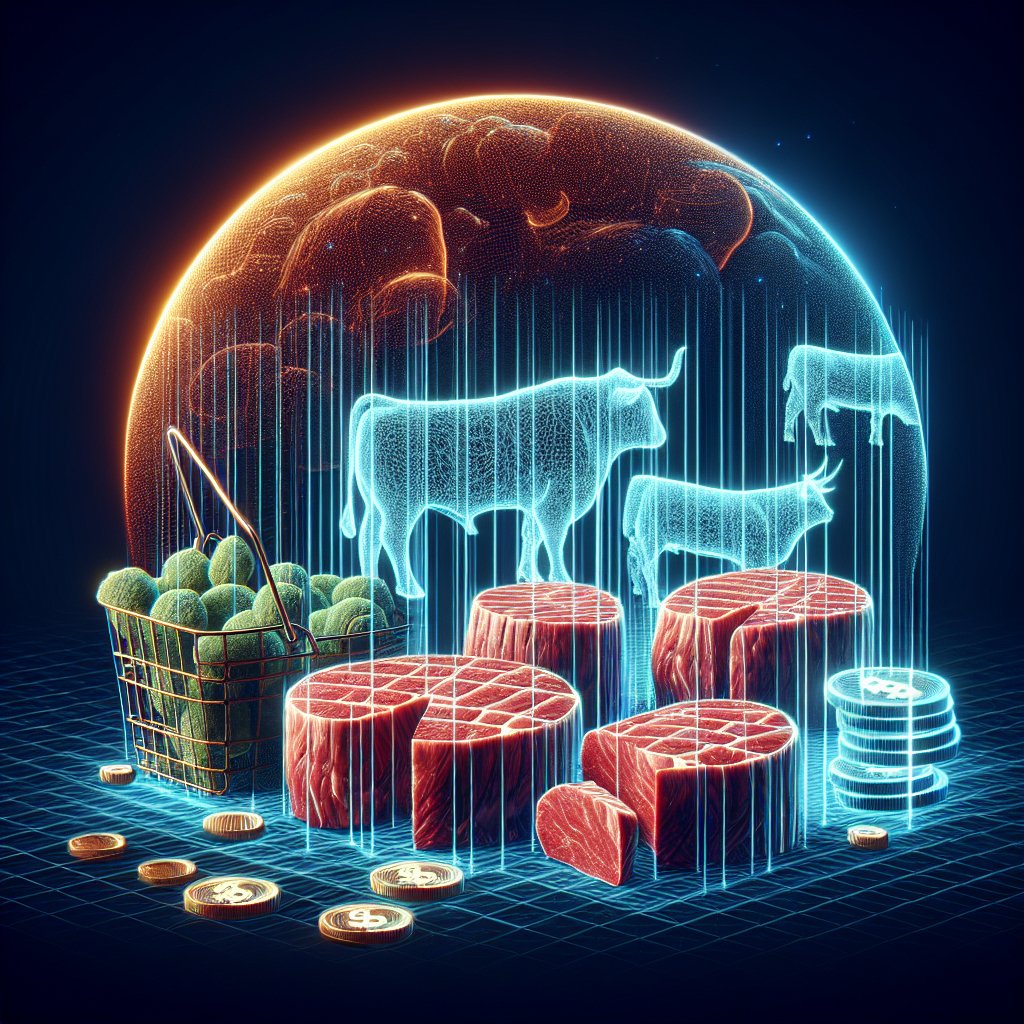The impact of the pandemic on beef prices has been a significant topic of discussion among economists, farmers, and consumers alike. As the world grappled with the COVID-19 crisis, various sectors of the economy faced unprecedented challenges, and the beef industry was no exception. This article delves into the multifaceted effects of the pandemic on beef prices, exploring the supply chain disruptions, changes in consumer behavior, and the long-term implications for the agricultural sector.
Supply Chain Disruptions
One of the most immediate effects of the pandemic on the beef industry was the disruption of supply chains. Lockdowns and restrictions imposed to curb the spread of the virus led to the temporary closure of processing plants, which significantly reduced the capacity to process cattle. This situation created a backlog of livestock on farms, forcing many ranchers to make difficult decisions regarding their herds.
As processing plants closed or operated at reduced capacity, the supply of beef in the market dwindled. This scarcity resulted in a sharp increase in prices for consumers. According to reports, beef prices surged by over 20% in some regions during the height of the pandemic. The increased prices were not solely due to supply shortages; they were also influenced by rising feed costs and the need for ranchers to maintain their operations despite reduced income.
Labor Shortages
Labor shortages further exacerbated the supply chain issues. Many workers in processing plants were either infected with the virus or were unable to work due to health concerns. This led to a significant reduction in the workforce available to process beef, which in turn affected the overall supply. The labor shortages also impacted transportation and logistics, making it difficult to move beef products from farms to consumers.
Export Challenges
The pandemic also affected international trade, with many countries imposing restrictions on imports and exports. The United States, one of the largest beef exporters, faced challenges in shipping products to foreign markets. As demand for beef surged in some countries, the inability to meet export commitments further strained the supply chain and contributed to rising prices domestically.
Changes in Consumer Behavior
The pandemic brought about significant changes in consumer behavior, which also influenced beef prices. With restaurants closing or operating at limited capacity, many consumers shifted their purchasing habits towards grocery stores. This shift led to an increase in demand for beef products in retail settings, further straining the supply chain.
Moreover, as people spent more time at home, there was a noticeable increase in home cooking and meal preparation. Consumers began to seek out higher-quality beef products, leading to a rise in demand for premium cuts. This trend not only affected prices but also encouraged ranchers to focus on quality over quantity, which could have long-term implications for the beef industry.
Health and Safety Concerns
Health and safety concerns also played a role in consumer purchasing decisions. As people became more health-conscious during the pandemic, there was a growing interest in sustainable and ethically sourced beef. This shift in consumer preferences prompted some ranchers to adopt more sustainable practices, which could lead to changes in production methods and pricing structures in the future.
Online Shopping Trends
The rise of online shopping during the pandemic also impacted beef prices. Many consumers turned to e-commerce platforms to purchase groceries, including meat products. This shift not only changed the way beef was marketed but also introduced new pricing dynamics as online retailers competed for market share. The convenience of online shopping may have led to increased prices as consumers were willing to pay a premium for the ease of delivery.
Long-Term Implications for the Beef Industry
The effects of the pandemic on beef prices are likely to have lasting implications for the industry. As ranchers and processors adapt to the new market realities, several trends may emerge that could reshape the future of beef production and pricing.
Investment in Technology
One potential outcome is an increased investment in technology and automation within the beef supply chain. To mitigate the risks associated with labor shortages and processing disruptions, many companies may seek to implement more advanced technologies that enhance efficiency and reduce reliance on human labor. This shift could lead to lower production costs in the long run, potentially stabilizing prices for consumers.
Sustainability and Ethical Practices
As consumer preferences continue to evolve, the demand for sustainably and ethically produced beef is likely to grow. Ranchers who prioritize animal welfare and environmental sustainability may find themselves better positioned in the market. This shift could lead to a re-evaluation of pricing structures, as consumers may be willing to pay more for products that align with their values.
Market Volatility
While the pandemic has highlighted vulnerabilities in the beef supply chain, it has also underscored the importance of market resilience. Future price fluctuations may become more common as the industry navigates the challenges posed by climate change, trade policies, and global health crises. Ranchers and processors will need to remain agile and responsive to these changes to ensure the stability of beef prices in the years to come.
Conclusion
The impact of the pandemic on beef prices has been profound, affecting every aspect of the supply chain from production to consumption. As the industry continues to recover, it is essential for stakeholders to learn from the challenges faced during this unprecedented time. By embracing innovation, sustainability, and adaptability, the beef industry can emerge stronger and more resilient in the face of future challenges.
Ultimately, the lessons learned during the pandemic may pave the way for a more sustainable and efficient beef industry, benefiting both producers and consumers alike. As we move forward, it will be crucial to monitor these trends and their implications for the future of beef pricing and production.




